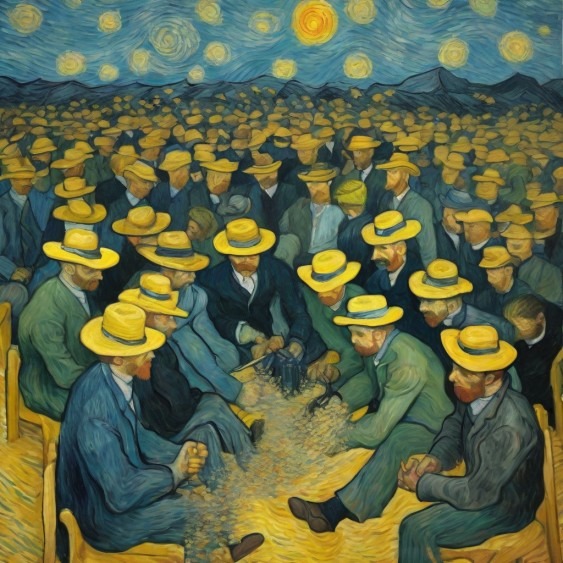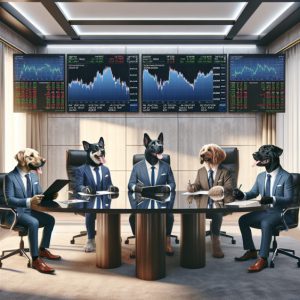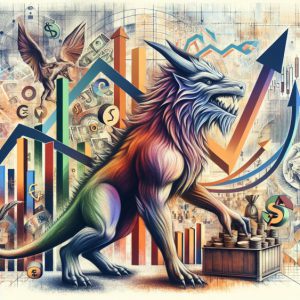
Emergent-Norm Theory: Understanding the Dynamics of Collective Behavior in Sociology
Nov 10, 2023
Introduction
In sociology, the study of collective behaviour delves into a group’s spontaneous and unstructured actions triggered by specific events or circumstances. This sociological phenomenon unfolds as individuals, seeking cues from one another, engage in unplanned group actions. Through ongoing social interaction and negotiation, these groups organically develop emergent norms, intricate guides shaping their collective conduct.
The genesis of emergent norms is a dynamic process involving the proposal, testing, and modification of tentative norms through social interaction and negotiation. Initially transient and adaptable, certain norms gradually crystallize while remaining flexible, adapting to changing circumstances. The swift evolution of norms and behaviours in response to influential individuals, new information, or unforeseen events underscores the malleability of emergent norms.
This phenomenon lays the foundation for the emergent-norm theory, an insightful framework that illuminates the dynamic and adaptive essence of collective behaviour in sociology. By unravelling the intricacies of emerging norms within social groups, this theory offers a nuanced understanding of the ever-shifting dynamics of collective behaviour.
Emergent Norms and Collective Behavior
When people come together in response to an ambiguous situation, they often develop shared norms and behaviours through social interaction. This process of emergent norm formation helps shape collective behaviour.
Emergent norms arise as group members look to each other for cues on acting. Tentative standards are suggested and tested through social negotiation. As more people adopt a particular norm, it becomes established within the group. However, these norms are initially fluid and adaptive, changing as new information arises.
The formation of emergent norms is driven by social influence and negotiation. Group members observe and imitate the actions of influential individuals. They also discuss and debate which norms are most appropriate. Over time, certain norms gain widespread acceptance.
Emergent norms help coordinate collective behaviour and action. They provide guidelines for what is considered acceptable and unacceptable. However, as the situation changes, so do the group’s norms and behaviours. New developments can shift norms in different directions.
The adaptive nature of emergent norms highlights the dynamic nature of collective behaviour. Groups develop shared behavioural guidelines through ongoing social interaction and renegotiation. There is a constant interplay between models, social influence, and collective action. The emergent-norm theory seeks to understand this complex, evolving relationship.
Types of Collective Behavior
There are several types of collective behaviour in sociology, including crowds, riots, panics, disasters, and social movements. Crowds form spontaneously and can range from small groups of people gathering on the street to massive crowds of thousands. Crowds tend to be transient and short-lived, lasting only as long as the event or situation that drew people together. Groups can become more organized through interaction and shared experiences, potentially evolving into social movements.
Riots involve large crowds that turn violent, often in protest or response to some perceived injustice or grievance. Riots typically involve property damage, looting, and physical violence. Panics occur when a threat is perceived, and people act based on their emotions rather than reason. Panics can spread quickly through crowds as fear and anxiety spread from person to person.
Disasters, both natural and man-made, often produce collective behaviour as people come together to respond, rescue victims, and provide aid. The shared experience of surviving a disaster can foster social solidarity and cooperation. Social movements are more organized and sustained types of collective behaviour that aim to promote or resist social, political, economic, or cultural change through collective action. Social movements use various strategies, from protests and demonstrations to media campaigns and lobbying, to achieve their goals and spread their message.
Crowds and Riots
Let’s delve further into these concepts:
1. Crowds: Crowds are gatherings of people that form spontaneously around a specific event, situation, or location. They often lack a clear agenda or purpose and may consist of individuals with diverse motivations and perspectives. Crowds can range in size from small groups to large masses of people. Examples of crowds include audiences at concerts or sporting events, shoppers during sales or special events, or participants at public demonstrations or rallies.
Crowds can exhibit various characteristics, such as heightened emotions, a sense of anonymity, and a collective energy. They can also experience contagion effects, where behaviors or emotions quickly spread through the crowd due to social influence and a desire for conformity. Crowds may engage in activities like cheering, chanting, or expressing enthusiasm or solidarity.
2. Riots: Riots are characterized by violent and chaotic behavior within a group, typically in response to a perceived grievance, injustice, or frustration. Riots often involve property damage, clashes with authorities, acts of vandalism, looting, and sometimes injuries or fatalities. Riots can be triggered by various factors, including social, economic, or political tensions.
Riots can have different motivations and objectives. Some riots are driven by grievances related to systemic inequalities, oppression, or perceived injustices. They can be a form of protest aimed at drawing attention to these issues and demanding change. In such cases, riots may be seen as a manifestation of collective frustration and a response to the lack of alternative channels for addressing grievances.
However, it’s important to note that riots can also involve opportunistic individuals who engage in criminal activities under the guise of protest. These individuals may not share the same grievances or motivations as the larger group, but they take advantage of the chaotic situation for personal gain.
Conditions that contribute to the emergence of riots include:
– Poverty and Inequality: Socioeconomic disparities, poverty, and lack of access to basic resources can create tensions and frustrations within communities, increasing the likelihood of riots.
– Oppression and Marginalization: When certain social groups face discrimination, oppression, or marginalization, the resulting grievances can fuel collective anger and contribute to the outbreak of riots.
– Lack of Political Power: When individuals or communities feel excluded or unheard in the political process, they may resort to rioting as a means of exerting pressure and drawing attention to their concerns.
It is important to differentiate between peaceful protests and riots. While both may arise from similar grievances, riots involve violent and destructive behavior, while peaceful protests aim to raise awareness and advocate for change through nonviolent means.
Understanding the underlying causes and dynamics of riots is crucial for addressing social issues and fostering inclusive and equitable societies. By addressing systemic inequalities, providing avenues for peaceful expression of grievances, and promoting dialogue and collaboration, it is possible to reduce the conditions that give rise to riots and create a more just and stable society.
Panics and Disasters
Panics and disasters can both trigger collective behavior, albeit with different manifestations and outcomes. Let’s explore these concepts further:
1. Panics: Panics occur when a group of individuals perceives a threat or danger that evokes sudden fear and anxiety. Panics often lead to irrational and impulsive responses, such as a stampede or a mass rush to escape the perceived threat. In panicky situations, individuals may prioritize their own safety over the well-being of others, resulting in chaotic and potentially dangerous behavior. Panics can be triggered by various factors, including perceived threats to physical safety, sudden unexpected events, or rumors and misinformation.
2. Disasters: Disasters, such as natural disasters or large-scale accidents, disrupt normal social structures and can lead to significant collective behavior. In disaster situations, established social systems and routines are often overwhelmed or rendered ineffective. This breakdown of normalcy can result in the emergence of new forms of collective behavior. While panicky behavior can occur during disasters, such as stampeding or hoarding resources, disasters can also bring about more positive collective behaviors.
Positive collective behaviors in disasters include:
– Altruism and Helping Behavior: Disasters often evoke a sense of solidarity and compassion among individuals. People may engage in acts of altruism, offering assistance to those in need, and prioritizing collective well-being over personal interests. This can manifest as volunteering, providing aid and support to affected communities, or participating in rescue and relief efforts.
– Community Self-Organization: In the face of a disaster, communities may come together to self-organize and coordinate resources and response efforts. This can involve setting up temporary shelters, distributing supplies, establishing communication networks, and pooling skills and resources to address the immediate needs of affected individuals.
– Resilience and Adaptation: Disasters can foster resilience and adaptive behavior within communities. People may collaborate, improvise, and find innovative solutions to cope with the challenges brought about by the disaster. This collective resilience enables communities to recover and rebuild in the aftermath of the event.
It is important to note that the response to a panic or disaster can vary depending on factors such as the nature of the threat, the level of preparedness, and the existing social dynamics within the group or community. While panics can lead to chaotic and potentially harmful behavior, disasters can also bring out positive collective behaviors that demonstrate the strength and resilience of communities in times of crisis.
Understanding the dynamics of panics and disasters can inform emergency preparedness and response efforts. By promoting effective communication, providing accurate information, and fostering a sense of community and solidarity, it is possible to mitigate panic behaviors and encourage positive collective behaviors during times of crisis.
Social Movements
Social movements refer to organized efforts by groups of people to bring about or resist social change. They are more structured and purposeful than crowds or riots but still rely on collective behaviour to mobilize people around a shared goal or ideology. Social movements employ protests, demonstrations, sit-ins, and boycotts to apply pressure and raise awareness of their cause. They utilize collective identity, shared beliefs, and solidarity among members to sustain momentum over time.
Effective social movements strategically frame issues in a way that resonates with the public and potential recruits. They employ organizational structures, division of labour, and communication networks to coordinate members and plan actions. Social movement organizations often emerge to institutionalize a movement’s goals, coordinate activities, and maintain the collective identity beyond specific events or campaigns.
Social movements demonstrate how collective behaviour can be channelled for positive social change when organized around a clear purpose. They highlight the power of collective identity, solidarity and coordinated action to challenge the status quo and transform social norms. While some movements fade away, others succeed in altering public opinion, influencing policy, and even bringing about revolutionary change in society. Through social activities, we see how collective behaviour at scale can shape history.
Explaining Collective Behavior
In the fascinating realm of sociology, understanding the mechanisms behind collective behavior is a central endeavor. Numerous theories have been formulated to shed light on the emergence of collective behavior, unraveling the intricate tapestry of human interactions and group dynamics.
The emergent norm theory, a prominent contender in this intellectual journey, takes center stage. This theory offers a captivating perspective on how groups come to develop shared norms and guidelines. It underscores the pivotal role of social interaction and negotiation in this process. In essence, collective behavior doesn’t just happen by chance; it’s an outcome of a dynamic interplay of colonial influences, imitation, and the constant renegotiation of norms within a group.
As we venture deeper into the complexities of collective behavior, we’ll explore a myriad of theories and insights that shape our understanding of how and why people act collectively. These theories form the foundation for comprehending the spontaneous actions, social movements, and group dynamics that make up the captivating world of collective behavior in sociology.
Contagion theory
Contagion theory, convergence theory, and relative deprivation theory are all frameworks that offer insights into the emergence and dynamics of collective behavior. Let’s explore each theory in more detail:
1. Contagion Theory: Contagion theory proposes that collective behavior spreads through a process of contagion, where individuals imitate the actions of others. According to this theory, as more people engage in a particular behavior or adopt a particular belief, it becomes more attractive and acceptable to others, leading to a rapid spread of the behavior within the group. Contagion theory suggests that social influence and the desire to conform play a central role in the diffusion of collective behavior.
2. Convergence Theory: Convergence theory suggests that individuals who are drawn to collective behavior events share common characteristics, concerns, or grievances. They converge around a shared focal concern, which serves as a unifying element and facilitates the emergence of collective behavior. This theory emphasizes the importance of shared experiences, interests, or goals in bringing individuals together and mobilizing collective action. Convergence theory recognizes that collective behavior often arises from a sense of solidarity and shared purpose among individuals.
3. Relative Deprivation Theory: Relative deprivation theory posits that collective behavior emerges when individuals perceive themselves to be unjustly deprived or disadvantaged compared to others. This sense of relative deprivation and perceived injustice can motivate individuals to take collective action in an attempt to address or rectify the perceived inequality. Relative deprivation theory recognizes the importance of social comparisons and the role of perceived inequities in mobilizing collective behavior.
These theories provide different perspectives on the factors that contribute to the emergence of collective behavior. While contagion theory emphasizes the influence of social imitation and conformity, convergence theory highlights the significance of shared concerns and experiences. Relative deprivation theory focuses on the motivation stemming from perceived injustices and inequalities.
It’s important to note that these theories are not mutually exclusive and can often interact and influence each other. The dynamics of collective behavior are complex and may involve a combination of these theories in different contexts and situations.
Understanding these theories can help shed light on why and how collective behavior emerges, spreads, and shapes the actions of individuals within a group. For investors, recognizing the underlying factors driving collective behavior can provide valuable insights into market trends, sentiment shifts, and potential investment opportunities.
.
Value-added theory
The value-added theory is another framework that contributes to our understanding of collective behavior. This theory suggests that collective behavior emerges when it provides some form of added value or benefits to participants, which makes the behavior self-reinforcing. These added values can include socializing opportunities, excitement, a sense of identity or belonging, or other intangible rewards.
According to the value-added theory, individuals engage in collective behavior because they perceive that participating will offer them something they value or desire. This perceived value acts as a motivator for individuals to join and continue participating in the collective behavior. As more individuals participate and experience the benefits, the behavior becomes self-reinforcing, attracting even more participants.
The theory recognizes that collective behavior often fulfills certain social or psychological needs of individuals. For example, participating in a protest march can provide a sense of belonging and solidarity with like-minded individuals, as well as a platform to express grievances. Joining an investment community or forum can provide opportunities for knowledge sharing, networking, and a sense of community among investors.
The value-added theory complements other theories by emphasizing the role of perceived benefits and rewards in motivating collective behavior. While contagion theory focuses on social influence and conformity and relative deprivation theory emphasizes perceived injustices and inequalities, the value-added theory highlights the importance of the positive experiences and benefits that individuals associate with participating in collective behavior.
Understanding the value-added aspects of collective behavior can inform our understanding of why individuals choose to engage in certain behaviors and how those behaviors sustain themselves over time. For investors, recognizing the perceived value that different collective behaviors offer can provide insights into the motivations and preferences of market participants, potentially influencing investment decisions and strategies.
The Power of Value-Added: Collective Behavior in Online Gaming Communities
Let’s consider the example of online gaming communities. Online gaming has become increasingly popular, and many players actively participate in gaming communities, forums, and social platforms dedicated to specific games or genres. The value-added theory can help explain why individuals engage in and sustain their participation in these gaming communities.
In this context, the value-added theory suggests that the collective behavior of participating in online gaming communities offers several perceived benefits or added values to the participants, making it self-reinforcing. Here are some specific ways in which the value-added theory applies to online gaming communities:
1. Socializing and Community: Online gaming communities provide a platform for players to connect with like-minded individuals who share their passion for gaming. Through forums, chat platforms, and multiplayer features, players can socialize, form friendships, and build a sense of community. The opportunity to interact with others who have similar interests and experiences is a significant value-added aspect of participating in these communities.
2. Skill Development and Learning: Gaming communities often foster an environment where players can learn from each other, share strategies, and improve their gaming skills. Players can exchange tips, discuss game mechanics, and participate in friendly competitions. The opportunity to enhance their gaming abilities and learn from more experienced players is another value-added aspect that attracts individuals to these communities.
3. Excitement and Competition: Online gaming communities provide an avenue for players to engage in competitive gameplay and experience the thrill of competition. Participating in tournaments, leaderboards, and cooperative challenges can add excitement and a sense of achievement. The competitive aspect of gaming communities offers a value-added experience that motivates players to continue participating and improving their skills.
4. Sense of Identity and Belonging: Gaming communities often develop their own subcultures and shared norms. Being part of a gaming community can provide players with a sense of identity and belonging. Players may identify themselves with specific games, characters, or gaming genres, forming a sense of camaraderie with fellow community members who share the same interests. This sense of identity and belonging is a value-added aspect that contributes to the sustainability of gaming communities.
By understanding the perceived benefits and added values associated with participating in online gaming communities, game developers and marketers can design strategies to enhance these aspects and attract and retain players. Similarly, investors analyzing the gaming industry can consider the value-added elements of gaming communities when assessing the potential growth and engagement of specific games or platforms.
It’s important to note that the value-added theory can be applied to various other collective behaviors as well, such as participation in social media communities, hobbyist groups, or even investment communities, where individuals derive value from social interactions, shared interests, learning opportunities, and a sense of belonging.
Conclusion: What Is Collective Behavior
In conclusion, collective behavior encompasses spontaneous group actions that arise in unstructured social situations. It offers valuable insights into human social psychology, group dynamics, and the development and dissemination of social norms. While collective behavior can have negative consequences, such as riots or panics, it also enables people to come together and drive positive social change through movements.
As our world becomes increasingly interconnected, understanding collective behavior becomes even more important. The advent of social media and globalization has amplified the potential impact of collective behavior. By studying and researching collective behavior, we can gain a deeper understanding of group processes, social change, and the complexities of the human condition.
It is essential to recognize that collective behavior is a multifaceted phenomenon that can manifest in various contexts, including online communities, protests, or even financial markets. By examining the underlying theories, such as contagion theory, convergence theory, relative deprivation theory, and value-added theory, we can better comprehend the motivations and dynamics behind collective behavior.
With further research and understanding, it may be possible to develop strategies and interventions that harness the constructive potential of collective behavior while mitigating its disruptive effects. By doing so, we can leverage collective behavior as a force for positive change and societal progress.
Enrich Your Knowledge: Articles Worth Checking Out

Giving Content to Investor Sentiment: The Role of Media in The Stock Market

Considering the impact of inflation, Why Is Investing Important?

Technical Analysis of Stocks and Commodities: Unveiling Insights

Why Is the US Education System So bad: Rubbish In, Rubbish Out Phenomenon

Investor Sentiment in the Stock Market Journal of Economic Perspectives

Mass Psychology of Fascism: Unmasking Bombastic News

Identifying Trends and Buying with Equal Weighted S&P 500 ETF

Real Doppelgangers: The Risks in the Age of AI

The Intelligent REIT Investor: How to Build Wealth with Real Estate Investment Trusts

TGB Stock Forecast: Rising or Sinking

Stock Market Crash Date: If Only The Experts Knew When

Reasons Why AI Is Bad: The Dark Truth?

The Inflationary Beast: Understanding What Inflation is and What Causes It

Carnosine Benefits: An Antioxidant for Health, Longevity, and Disease Prevention



